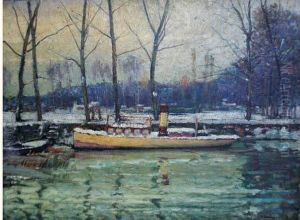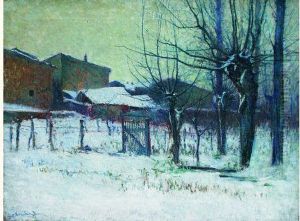Fernand Alexis Lambert Paintings
Fernand Alexis Lambert, though not a household name in the vast panorama of art history, was a French sculptor whose contributions to the art world, particularly during the late 19th and early 20th centuries, provide a glimpse into the stylistic transitions and cultural undercurrents of his time. Born in 1851, Lambert navigated the world of art during a period marked by dramatic shifts in aesthetic preferences and the emergence of new art movements. His work, while not as widely recognized as that of his contemporaries, encapsulates the essence of a transitional period in European art, bridging the gap between traditional sculpture and the burgeoning innovations of the modern era.
Lambert's artistic journey was reflective of the era's evolving tastes, from the neoclassical influences that dominated the early part of the 19th century to the more experimental approaches that emerged later. Despite the scarcity of detailed records on his life and work, it is evident that Lambert was adept at capturing both the human form and the more ephemeral qualities of emotion and spirit, which became increasingly valued as the 19th century gave way to the 20th. His sculptures, often characterized by a meticulous attention to detail and a fluidity of form, suggest a deep engagement with both the material and the conceptual aspects of art-making.
The specifics of Lambert's career, including his education, influences, and exhibitions, remain obscure, largely overshadowed by the luminaries of his time. However, his works that survive offer a testament to his skill and versatility. Whether through public monuments, decorative pieces, or intimate statuettes, Lambert's contributions reflect both the personal vision of the artist and the broader artistic movements of his day. His death in 1914 marked the end of a career that, while perhaps not widely celebrated, played its part in the rich tapestry of French art at the turn of the century.
In summary, Fernand Alexis Lambert's legacy, encapsulated in the sculptures he left behind, tells a story of artistic transition and understated elegance. His life's work serves as a reminder of the countless artists whose voices, though quieter than some of their more famous peers, have nevertheless contributed to the diverse narrative of art history. Lambert's sculptures, embodying both the beauty of the human form and the spirit of an era in flux, continue to offer inspiration and insight into a pivotal moment in the evolution of artistic expression.




